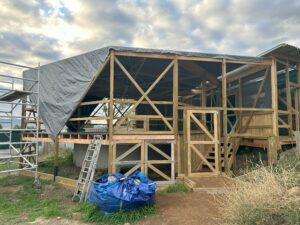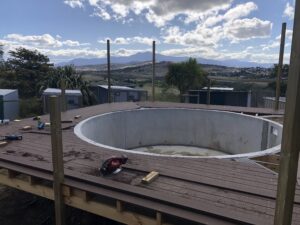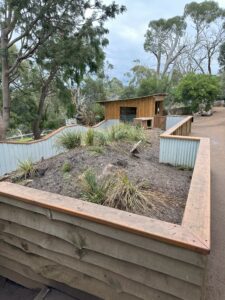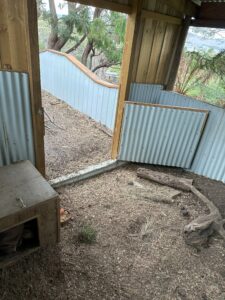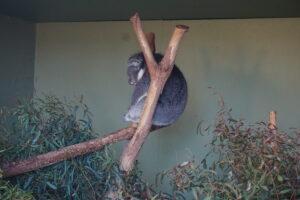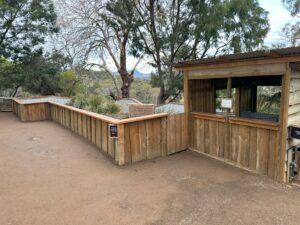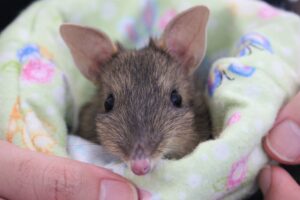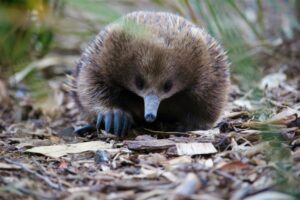Three TNCF funded projects completed at Bonorong
Three exciting projects at Bonorong Wildlife Sanctuary have been completed thanks to funding received through Wildcare’s Tasmanian Nature Conservation Fund (TNCF).
Sea/Shorebird Rehabilitation Pool
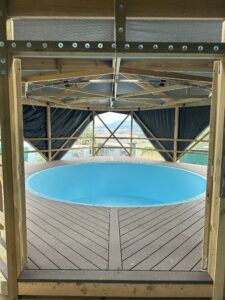 Following the catastrophic failure of the previous rehabilitation pool, an urgent need was identified to build a new pool with more robust materials. Now complete, the pool is the largest available within the state of Tasmania and is used for re-strengthening birds after injury and to provide access to facilities that can facilitate water proofing for juveniles or birds that must be tested for waterproofing before being released back to the wild. So many bird species will need to use the pools which include but are not limited to penguins, pelicans, albatross, grebes, coots, petrels, prions, herons, swans, silver gulls, Pacific Gulls, terns – just to name a few.
Following the catastrophic failure of the previous rehabilitation pool, an urgent need was identified to build a new pool with more robust materials. Now complete, the pool is the largest available within the state of Tasmania and is used for re-strengthening birds after injury and to provide access to facilities that can facilitate water proofing for juveniles or birds that must be tested for waterproofing before being released back to the wild. So many bird species will need to use the pools which include but are not limited to penguins, pelicans, albatross, grebes, coots, petrels, prions, herons, swans, silver gulls, Pacific Gulls, terns – just to name a few.
Large numbers of Short-tailed Shearwaters will hugely benefit from the pool during their annual migration season each year in which the rescue hotline receives hundreds of state wide calls within a three to four week window for birds needing help after crash landing at the beginning of their migration.
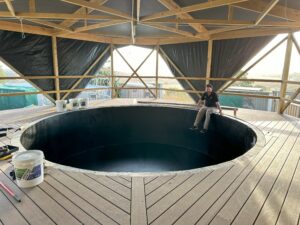 The primary reason for birds needing assistance during this period is light pollution. As they are guided by moonlight, synthetic light confuses them, causing them to crash land in spaces such as roads and rooves. Birds commonly present with dehydration and injuries and calls are often received for several at a time. In the busiest season to date, Bonorong alone received 200 birds for assessment in one season.
The primary reason for birds needing assistance during this period is light pollution. As they are guided by moonlight, synthetic light confuses them, causing them to crash land in spaces such as roads and rooves. Birds commonly present with dehydration and injuries and calls are often received for several at a time. In the busiest season to date, Bonorong alone received 200 birds for assessment in one season.
A quick turn around in their rehabilitation is essential to ensure that they can still make the window needed for their northern arctic migration journey. The pool is crucial to this – to ensure that they maintain or regain waterproofing during their care, and that they are fully waterproof and fit for release – depending on the treatment each individual requires, most Shearwater patients will utilise the pool multiple times a day.
The pool has been coated with a marine friendly waterproof membrane and light blue colour coating. This colour allows light so as not to affect the depth perception of diving patients. A deck and jetty have been constructed surrounding the pool to allow patients access in and out of the pool and a space that they can utilise when not within the pool. The enclosure structure has also been completed surrounding the pool with timber and netting.
New Wombat Enclosure
This project created an additional enclosure for wombats at Bonorong Wildlife Sanctuary, ensuring that a greater amount of wombat orphans can have the opportunity for intermediate housing.
An existing enclosure which previously housed koalas was converted for this purpose. The koalas that were at Bonorong, remained from previous owners prior to Bonorong becoming a sanctuary and the last of these koalas died several months ago. As they are not native to Tasmania and there is not an avenue or reason for them to need residency at Bonorong they have not be replaced. This gave offered the opportunity to repurpose the space to support wildlife rehabilitation.
Wombats have very different housing requirements to koalas. They don’t need height but secure ground enclosures with walls that are unable to be dug under, and a shelter space along with a lot of mounded digging substructure so a substantial rebuild was required.
The enclosure now houses orphaned wombats at the appropriate middle stage of their rehabilitation. Wombats are the only animal from within the Sanctuary that are able to be released. Most residents have issues which means they can not safely live in the wild but are able to have a happy life at the Sanctuary.
Once orphaned wombats in the care of the sanctuary reach their critical ‘turning’ age, where they start to exhibit more independent instincts and behaviours, (as happens in the wild with their mum), they are moved off site to a soft release site where they acclimatise to the smells and sounds of the area in a supportive manner (ie; they can still access their pre-release enclosure if they want to). Orphaned wombats need to remain in care until they are around two years old before these instincts kick in and they are independent.
There is a shortage of appropriate enclosures for orphaned wombats in the Tasmanian rehabilitation community, which is not surprising given the complex building requirements of a burrowing marsupial. And many are needed as unlike many other commonly orphaned species they cannot be housed together in later stages of rehabilitation when their solitary instincts start kicking in.
This middle stage enclosure is utilised for around eight to twelve months of the total duration of their care. While a release enclosure may only need to be utilised for two to four weeks, middle stage enclosures are required to house individuals for many months, so this project has delivered a great outcome in both an additional space fit for this purpose, and a resource to enable volunteer rehabilitators at Bonorong to transfer orphans following the more intensive at home care that wombats require until they are nine months old.
Wildlife Rescue Phone Hotline Support
Have you ever found injured or orphaned wildlife and wondered who to call? Or perhaps you did know and called Bonorong’s 24/7 Wildlife rescue hotline?
Bonorong Wildlife Sanctuary conducts the only state-wide 365 days 24/7 Wildlife rescue hotline in Tasmania, coordinating over 1400 community volunteers who stand ready to respond to wildlife rescue callouts. Last year they received over 17,000
calls!
The rescue service call operator cell is a scene of focused, frenetic activity connecting member of the public callers, vets, carers, volunteer rescuers and as needed, other government departments and emergency or utility services. Getting the quickest and most humane outcome for wildlife is the driver for sorting each call.
- Eastern barred bandicoot by Emmalene Maher
- Echidna – photo courtesy of Bonorong Wildlife Sancturary
The wildlife phone rescue service is underpinned by a large community of volunteers including over 1400 registered wildlife volunteers. A free wildlife rescue course is held four times per year and there are regularly 300-400 attendees!. There is no obligation for all attendees to become wildlife rescuers but for those that don’t, they are still armed with some basic wildlife rescue messages. Since first establishing the wildlife rescue service Bonorong have trained approximately 22,000 community members. Around twenty staff are trained on the rescue phone team as rescue coordinators who cover the five currently required day, dusk and nocturnal shifts.
An ongoing challenge is that each year, the service consistently receives an additional 500-1000 calls compared to the previous, which means an increase in wages required to sufficiently staff the hotline, this funding assists with those costs.
Read the rescue stories of Smoky, the juvenile Southern Brown Bandicoot, Scuba the Forest Raven and Raindrop the Short-Beaked Echidna here.
